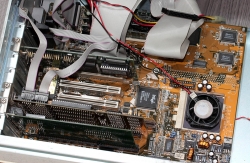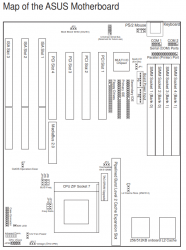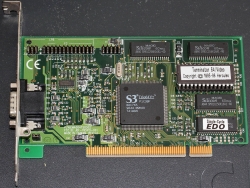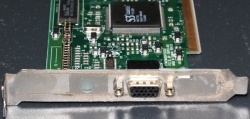Cleaning out old PCs
Sunday, October 14. 2018
Now that my new PC is done (see my previoius post and Larpdog's Twitch https://www.twitch.tv/videos/319110553):
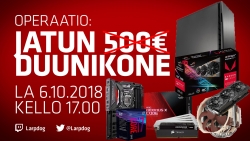

It's finally time to make some space to my old junk storage. I found two of my previus PCs there, which finally need to go to SER.
When reading this, please understand that I do own other PCs too. Also, I have owned more PCs than I currently run and these two heading out, its just that I don't have those ones anymore to write a blog post about.
New PC - 2018 - Reference
Just to get the difference, I'll post couple bad still images from my new PC:
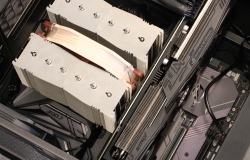
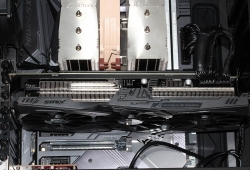
Both pictures are actually crappy for a number of reasons. First, a Noctua NH-D15 CPU-cooler is huge. It weighs 1.3 kg and is 16 cm tall measured from top of CPU to top of Noctua's fans. It takes 16 x 15 x 15 cm space from the PC case, just to make sure there is proper air flow for the heatpipes coming from the CPU. For photography, it means everything else is hidden by it. Ufffff!
Then Asus motherboard has an aluminium shielding covering everything. That's most likely for EMC protection and heat management. In a properly cooled PC-case, black aluminium transfers heat out of the motherboard faster. Also, a Fractal Design PC-case is pitch black. What I have here is a black picture of blackess on black.
Finally, also the graphics card is quite a beast. It takes 30 cm in lenght and is over 5 cm thick. Yet again covering everything inside the PC, that would be worth looking at. So, this 2018 PC is visually quite boring. Maybe that's why people love having some sort of light show inside their transparent case. Ufffff! My case doesn't have any transparent parts in it, no PC-disco for me, thanks.
PC 1 - Pentium 4 from years 2002-2008
This one I used in couple of hardware configurations for many many years. Mostly with Windows XP.
After serving me well, I decommissioned this around end of year 2008. There are changed files in early 2009, but it looks like I haven't used this PC since. It has been mostly gathering dust in storage.
CPU
Spec:
-
Intel® Pentium® 4 Processor 2.40 GHz, 512K Cache, 533 MHz FSB
-
Launch: 2002/Q1
-
Cores: 1
-
512KiB Cache
-
2.4 GHz
- 533 MHz FSB
- Socket 478
Details are at Ark Intel.com https://ark.intel.com/products/27438/Intel-Pentium-4-Processor-2-40-GHz-512K-Cache-533-MHz-FSB
It was my last PC not running 64-bit AMD64-instruction set at the end of 32-bit era Mighty powerful at the time, still less powerful than my iPhone 8 today. It looks like this with Intel's boxed CPU-cooler:
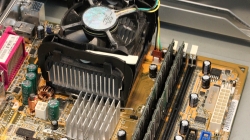
Board
The motherboard for this project is an Asus P4PE:
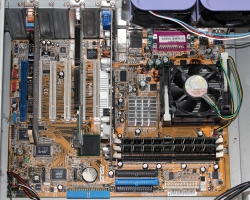
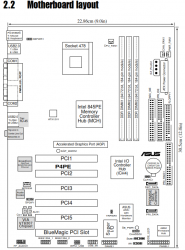
More details are at Asus' website: https://www.asus.com/supportonly/P4PE-XTE/HelpDesk_Manual/
Graphics card
Given the fact, that I never like putting enormous amounts of money into GPU's, so this one has a Club-3D Radeon 9800 PRO 128MB DDR GDDR:
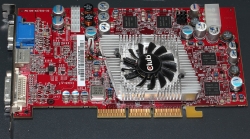
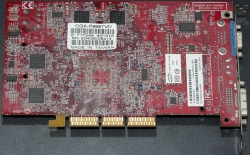

The manufacturer's fan on top of the GPU was a piece of junk. I had to replace it in a year or so. Also, note the S-Video output between standard VGA D15 and DVI-D. Before HDMI, hooking up a PC to an everyday TV was tricky. S-Video was one of the supported connectors in TVs having multiple SCART-connectors.
Also looking at the pics of the CPU-cooler and the graphics card make me laugh. There is almost no cooling at all in neither. Also the simpliness of graphics card is something that really sticks out. Modern cooling, especially in graphics cards, looks HUGE!
One notable thing to mention, is that this graphics card connected to the MoBo via AGP or Accelerated Graphics Port and having DirectX 9.0 hardware acceleration making it pretty fast (at the time). If you've never heard of AGP, don't worry, it was just an attempt to make GPUs connect to CPU/RAM-package faster. It was little bit faster than PCI, but not much. Obviously, it wasn't such a great invention and was quickly surpassed by PCIe, which seems to stand the test of time. For curious ones, I googled up some specs for the card: https://icecat.biz/en-in/p/club3d/cga-p988tvd/graphics-cards-RADEON+9800+PRO+128MB+DDR-113233.html
PC 2 - Pentium from years 1994-1998
Ok, this baby is an old one! To make it really ancient, it even runs IBM OS/2 as operating system. Those padawans who don't know what an OS/2 is, just hit to Wikipedia for https://en.wikipedia.org/wiki/OS/2. During the active years in servie, I recall upgrading the CPU once, doubling the RAM once and swapping the GPU-card to a faster one. This is the oldest hardware I have, and didn't create any records at the time. For anything newer, I have proper records of the history in my wiki.
CPU
Spec:
- Intel® Pentium® Processor 150 MHz, 60 MHz FSB
- Launch: 1996/01
- Cores: 1
- 8 + 8 KiB Cache
- 150 MHz
- 60 MHz FSB
- Socket 7
Details are at Ark Intel.com https://ark.intel.com/products/49958/Intel-Pentium-Processor-150-MHz-60-MHz-FSB
This old puppy has one distinguishing feature: it is Spectre/Meltdown-proof! As it doesn't have any kind of prediction or jump analysis in it, it cannot be fooled. ![]() Actually, there is nothing in it to make it run faster. It is a product of an era when everything was made faster by adding megaherz (note: not gigaherz) to base frequency.
Actually, there is nothing in it to make it run faster. It is a product of an era when everything was made faster by adding megaherz (note: not gigaherz) to base frequency.
The installed CPU with Intel's boxed cooler looks like this:
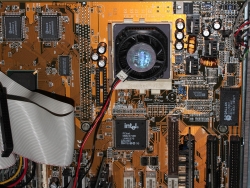
Please, notice how a heatsink and a fan on top of it are almost 20 mm high! ![]()
Also, don't confuse this Pentium to any of the modern day CPUs Intel calls Pentium. This one was really one of the first ever manufactured Pentiums. Initially this had a slower Pentium in it (I think 90 MHz), just getting an upgrade was inexpensive at the time.
Board
Motherboard is a Asus P/I-P55T2P4. Some specs of it can be found from: https://www.asus.com/supportonly/PI-P55T2P4/HelpDesk_CPU
Note how this is clearly a PCI-era board, but it still has three ISA-slots in it. And please, don't confuse PCI for a modern PCI-express. That's probably why, the word "conventional" is used in Wikipedia article of PCI: https://en.wikipedia.org/wiki/Conventional_PCI
GPU-card
Oh, this is a trip to memory lane. Card is a S3 Trio64V+. Some information about this relic is at https://en.wikipedia.org/wiki/S3_Trio and http://www.vgamuseum.info/index.php/cpu/item/359-s3-trio64v.
Note how I have Scotch Tape on two holes of the mounting bracket. Reason is simple, back in the 1990s we didn't know how air in a PC case should flow and we had it wrong. Sucking air trough graphics cards (or any other necessary components) is not smart and that's why its done differently today.
This particular card first appeared in 1995 and I've been using it for couple of years around that time. S3 was a really successful graphics company and their products were really good at the time. Also, at the time companies did design and manufacture their own cards. Today manufacturers just release specs and reference designs for the actual manufacturers to do the heavy lifting. Also, for old geezers like me, it is soooo weird to see a graphics card to be running just-the-regular PCI.
For brief history of GPUs in the 90s, read something like From Voodoo to GeForce: The Awesome History of 3D Graphics @ PC Gamer. Just like CPUs, also GPUs have gone giant leaps during past 20 years.
If you've never heard of company called S3 Graphics, go educate your self at https://en.wikipedia.org/wiki/S3_Graphics. Brief highlights are January 1989, founding of the company, November 2000 at point where S3 had officially been outran by competition, they changed their name to SONICBlue. And finally March 2003, when filed for Chapter 11 bankruptcy. They had their moment, but given the fierce competition by Nvidia and Ati and Matrox and many others, they just couldn't keep up with the technological advances fast enough to be able to offer interesting products to customers. Today, what remains of S3 is part of HTC, the Chinese cellphone manufacturer.
Ok, the junk's gone - What then?
Yes, it cleaing up doesn't end here. I still have ~1000 floppy discs in storage. Now that PCs having a 5.25" or 3.5" drive are gone, I'll keep cleaning some more. Maybe I should take a peek into some of those floppies to see if there is anything valuable in them.
Also, I have the images of the OS/2 hard drives. Next I need to figure how to read them.
